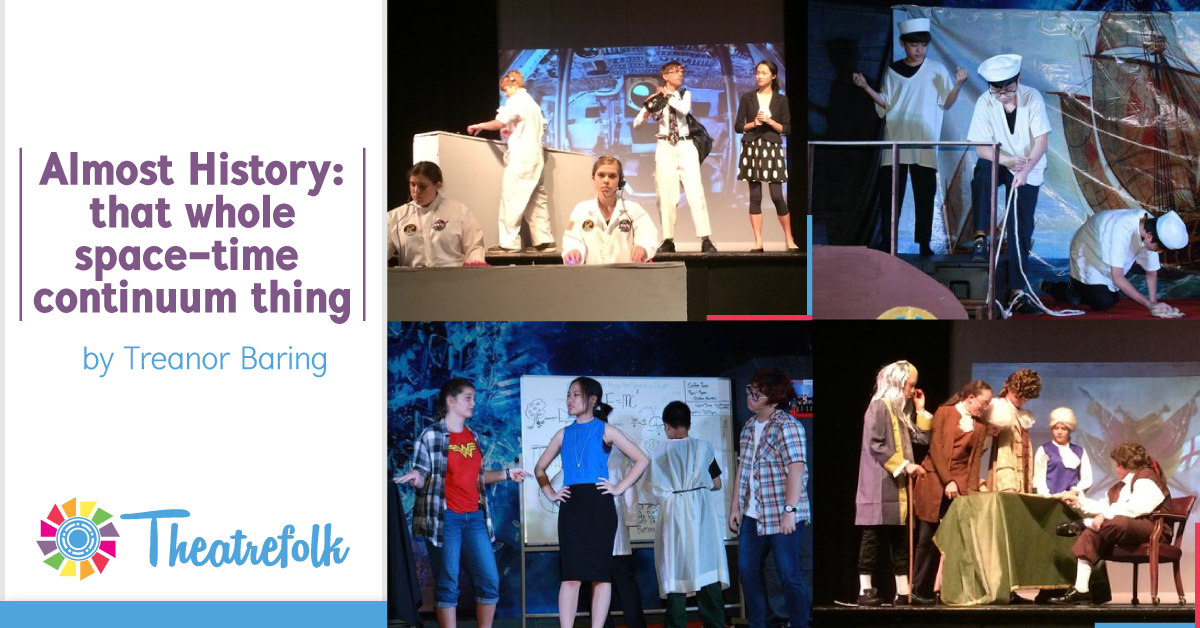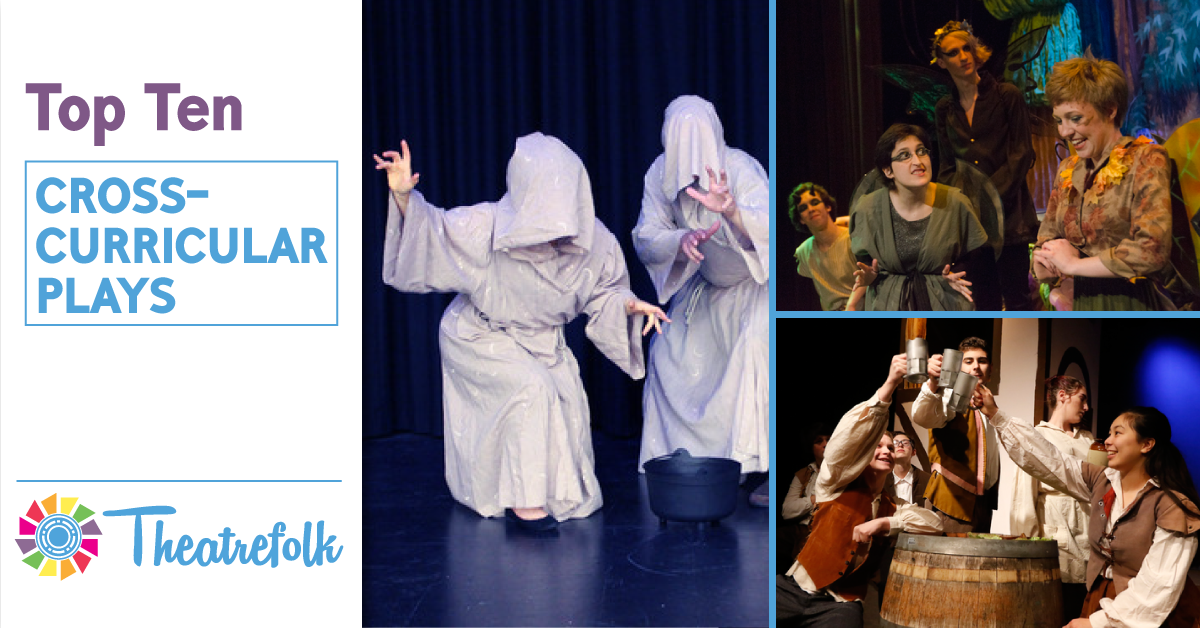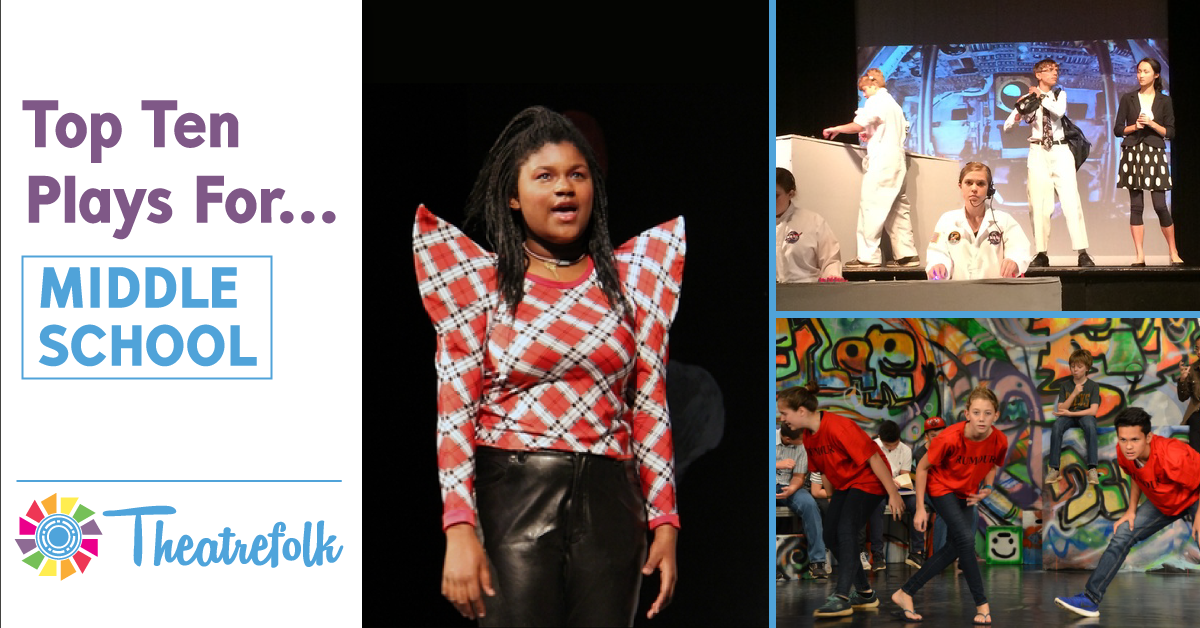Agatha Rex by Lindsay Price is a bold high school take on Antigone - packed with heart, conflict, and a powerhouse ensemble. One girl. One stand. One huge risk. *NEW COMPETITION VERSION AVAILABLE!*
Theatrefolk Featured Play: Almost History: that whole space-time continuum thing by Treanor Baring
You gotta study history
And know that it’s no mystery
Without the facts of every bit
You are doomed to repeat it.
Repeat it, repeat it, repeat it…
Welcome to our Featured Play Spotlight. Almost History: that whole space-time continuum thing by Treanor Baring immerses drama students into some of the great moments in American history. And they’ll have so much fun they just might want to repeat it again and again!
In a hilarious series of time-travelling misadventures, a Reporter and a Sidekick livestream from great moments in American history.
Despite the über-scientist Sidekick’s best efforts to keep the clueless Reporter out of trouble, they change the course of history and return to a comically chaotic present. Even Einstein and Marie Curie cannot undo the disastrous effects of their mishaps.
Eventually, they are able to save democracy and technology by restoring order to the “whole space-time continuum thing.”
Why did we publish this play?
The title gives you a pretty big hint about the tone of the play and that it’s not going to be your typical time travel experience! Add in a little dash of history and a lot of simple staging (you too can stage time travel) and you’ve got all the reasons why we published Almost History.
Let’s hear from the author!
1. Why did you write this play?
To celebrate some of the great moments in American history. And also because I have a quirky sense of humor and a very middle school sensibility when it comes to comedy.
2. Describe the theme in one or two sentences.
The synopsis is that a reporter and sidekick travel back in time to great moments in American history and end up creating chaos in the whole space-time continuum thing. The theme is that it’s important to learn history, but in a fun way.
3. What’s the most important visual for you in this play?
The reporter and the sidekick standing with their streaming equipment on the edge of the signing of the Declaration of Independence, the moon landing or Alexander Graham Bell’s workshop. They start as observers and end up as unwitting participants.
4. If you could give one piece of advice for those producing the play, what would it be?
Be flexible with casting. There isn’t a single character that can’t be played by a girl or a boy. I’m always available for questions.
5. Why is this play great for student performers?
It’s got slapstick comedy, with lots of running around on stage and goofy looks, but I also enjoy writing snappy dialogue. It has a large cast with interesting supporting characters and varying line length for all levels. Many of the characters can be doubled for smaller programs. And the characters are recognizable to middle schoolers. Teachers have told me their students love bringing, or seeing, the people they’re studying in history come to life, but not so seriously. School theatre directors have also told me they look for ways kids can be involved back-stage. The sound and light cues can be adapted to a program’s resources, and they give a chance for non-actors to be involved in the production.



